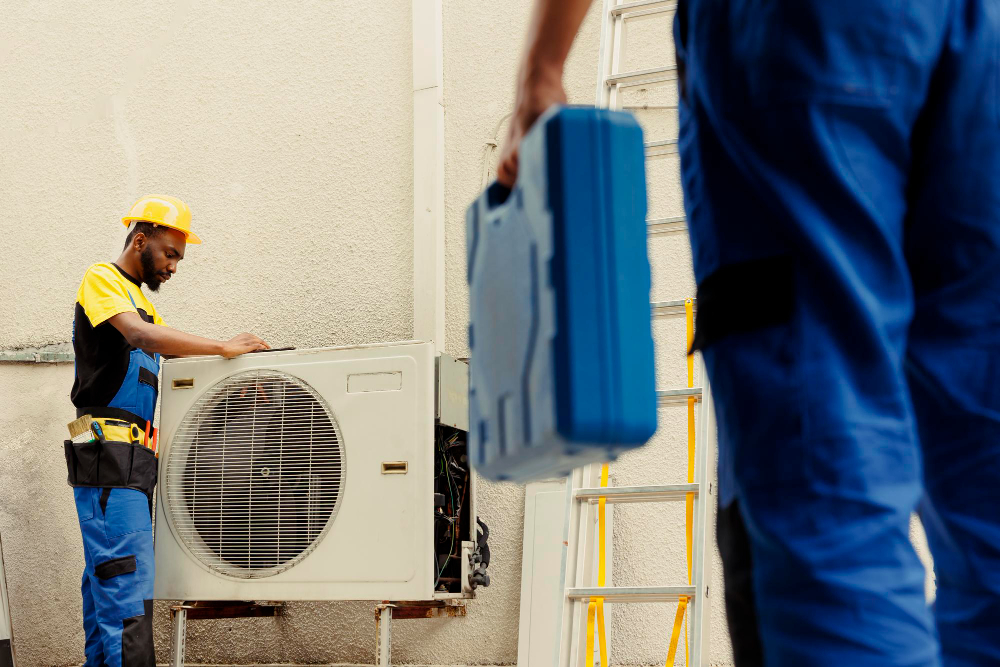The Ultimate Guide to Seasonal HVAC Maintenance to Keep Your System Running All Year Round

When was the last time you thought about your HVAC system? Chances are, it's an essential part of your daily comfort that you only notice when something goes wrong. But just like any mechanical system, your heating, ventilation, and air conditioning unit requires regular tune-ups to ensure it performs at its best.
In this comprehensive guide, we'll walk you through the importance of seasonal maintenance for your HVAC system, the steps to perform your own check-ups, and when it's crucial to call in the professionals.
Why Seasonal Maintenance Matters
An HVAC system is a sizable investment, and regular attention can make a significant difference in its longevity and efficiency. Whether you're cooling your home in the hot Central Florida summers or warming up in the brief, but chilly winters, your HVAC system is working hard to keep you and your family comfortable.
Seasonal maintenance is more than just a precaution; it's the key to extending the life of your HVAC system and ensuring it operates at peak efficiency. An optimally functioning system means lower energy bills, improved air quality, and a reduced risk of unexpected breakdowns.
The Basics of DIY HVAC Maintenance
Performing your own maintenance on your HVAC system, armed with basic knowledge and the right tools, can help you save on service calls and become more familiar with how your system works. Here's what you can do at home.
1. Change Filters
Air filters are probably the easiest component of your HVAC system to maintain. They need to be replaced every 1-3 months, depending on your system and the type of filter you use. Dirty filters can restrict airflow and force your system to work harder, leading to increased energy usage and potential damage.
2. Clean the Vents and Ducts
To maintain proper airflow, ensure that all your vents are clean and unobstructed. Vacuuming or dusting around and inside your vents can help improve air quality and efficiency. Duct cleaning may require a professional but should be done every few years, especially if you notice dust and debris buildup.
3. Check for Leaks
An HVAC system that leaks air is inefficient and costly. Inspect the ductwork, looking for any visible tears, gaps, or damage. Seal any leaks with duct tape or contact a professional for more extensive repairs.
4. Inspect and Clear Drainage
Your HVAC system has a condensate drain line that can become clogged with algae, mold, or sludge. If this happens, the line can back up and cause water damage. Check the drain line and pan for blockages and flush them out with a bleach and water solution.
5. Clean the Coils
The evaporator and condenser coils can get dirty over time, which reduces their ability to absorb heat. Use a soft brush to clean the coils and remove any debris. Be gentle, as these coils are delicate and can be easily damaged.
6. Check Refrigerant Levels
Low refrigerant levels can indicate a leak or another issue. Use a refrigerant gauge to check the levels, and if they're consistently low, call a professional to identify and fix any leaks.
When to Call in the Pros
While regular maintenance can be DIY, there are times when calling in an HVAC professional is the best option. These include:
- Annual Inspection: Even if you perform regular DIY maintenance, an annual inspection by a professional is advised. They can catch small issues before they become big problems.
- Professional Cleaning: Coils, blowers, and other critical components often require special tools and expertise to clean properly and safely.
- Efficiency and Safety Checks: Professionals can check your system's efficiency to ensure it's running as it should without posing a risk to your health or home.
Investing in a professional's expertise can save you time and money in the long run by ensuring your system is operating at maximum efficiency and that minor issues don't become costly repairs.
Seasonal Maintenance Checklists
For both DIY and professional maintenance, here are seasonal checklists to keep you on track.
Spring
- Change the air filter
- Clean the outdoor unit
- Check the thermostat for accuracy
- Run the system and listen for odd noises
Summer
- Inspect insulation on refrigerant lines
- Check the drain line for clogs and leaks
Fall
- Remove leaves and debris from the outdoor unit
- Inspect the fan belt and replace if necessary
- Lubricate moving parts
Winter
- Check the central air unit for damage or obstructions
- Test the heater to ensure proper functionality
- Inspect the ductwork for leaks
By staying on top of these seasonal checklists, you can protect your HVAC investment and enjoy a comfortable home environment all year round.
Partnering with the Right Supplier
When it comes to maintaining your HVAC system, having the right supplier can make a world of difference. If you're in Central Florida, look no further than Discount Air Supply for all your HVAC needs. From high-quality filters and parts to expert advice, they're the go-to supplier for maintaining your system.
Don't wait for the next seasonal change to think about your HVAC system. By following the advice in this guide, you can take charge of your system's maintenance, ensuring it provides reliable comfort day in and day out. Remember, a little care goes a long way, and when it comes to your HVAC, the effort is well worth it. If you're looking for an HVAC supplier in Central Florida, contact Discount Air Supply today for more information.